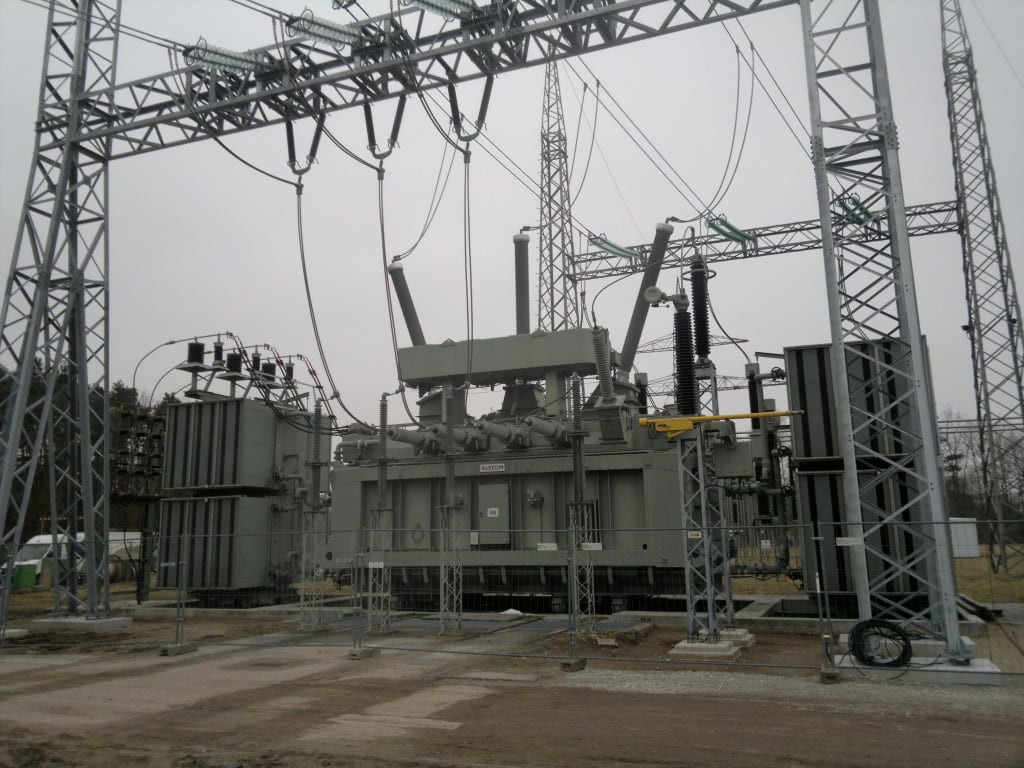Severe Solar Storm Could Shut Down U.S. Grid for Months, Study Says
A severe solar storm striking the continental U.S. could cause trillions of dollars in damage to the global economy and shut down portions of the U.S. grid for up to a year, according to a new study prepared by the Cambridge Centre for Risk Studies for insurance firm AIG.
The study, Helios Solar Storm Scenario, is intended as a risk assessment and estimate of the insurance exposure from a coronal mass ejection (CME), or solar storm, on the level of the 1859 Carrington event, the most severe CME on record to strike the Earth. That event caused widespread damage to the national telegraph system, in some cases starting fires and delivering electric shocks to telegraph operators.
CMEs, which are associated with solar flares, are releases of charged particles from the sun that can cause disruptions when they impact the Earth’s magnetic field. Although most such impacts are minor—they are the cause of the well-known aurora borealis/aurora australis effects in the upper atmosphere—severe events can induce electric currents in the Earth’s surface, currents that can enter electrical systems and cause voltage fluctuations. A CME in 1989 that was far smaller than the Carrington event tripped Hydro-Québec’s La Grande high-voltage transmission network and caused widespread power outages and damage up and down the U.S. East Coast.
The risk of another Carrington-class CME striking the Earth is not clear, though it is thought to be around once every 100 to 200 years. A CME of at least that magnitude was observed in 2012, but it missed striking the Earth by about nine days because the solar flare was oriented in a different direction.
Uncertain Risk from Solar Storm to Large Transformers
Estimating the physical and economic impacts of a Carrington-class CME is not simple because there is significant disagreement on the amount of damage that might occur and how quickly the grid could recover. The largest vulnerability is to extra-high-voltage (EHV; up to 354 kV) transformers, which are very large, expensive, and difficult to transport; take months to manufacture; and are mostly sourced from overseas.

Some estimates have suggested that the loss of multiple EHV transformers from a CME event could shut down portions of the grid for months. A similar study prepared in 2013 by Lloyd’s suggested damages could reach $1.2 trillion and outages could extend up to two years. Work by the Electric Power Research Institute, however, has suggested that temporary EHV transformers could be placed in a matter of days and kept in operation long enough to source permanent replacements.
One point of agreement, however, is that substantially more work needs to be done to harden at-risk systems and equipment against solar storms, both in the U.S. and worldwide. The Federal Energy Regulatory Commission and the North American Electric Reliability Corp. (NERC) have formulated a proposed standard that identifies a benchmark 100-year event and requires planners to identify their risks and correct deficiencies.
In light of the uncertainties, the Cambridge study describes a range of three scenarios resulting from a Carrington-class CME event. The primary variable is the degree of damage to EHV transformers and how long it would take to replace them. In the mildest scenario, only a few sustain significant damage. In the more serious scenarios, roughly one-fifth of the nation’s EHV transformers are damaged, with about 80 sustaining major to fatal damage. Repair times are assumed to range from a few days for transformers tripped offline to up to a year for those that are destroyed.
Millions Affected by Months-Long Outages
Even under the least severe scenario, limited areas totaling around 15 million people are without power for up to six months. Under the most extreme scenario, outages affecting 40 to 50 million people persist for four to six months, and many areas—up to 10 million people—suffer outages of up to a year because of the time required to replace severely damaged EHV transformers.
Damage from a CME would not be evenly distributed across the U.S. because of differences in ground conductivity and concentrations of EHV equipment. The most severe effects would occur in Illinois and New York, with other Eastern and Midwestern states suffering significant damage. Relatively little damage would occur in the Western U.S.
The economic effects from such sustained outages would extend nationwide and worldwide, however. The least severe scenario would result in $217 billion in direct economic damages in the U.S., with $202 billion in indirect effects and $474 billion total worldwide. The most severe scenario would mean $1.2 trillion in direct economic damages, $1.1 trillion in indirect damages, and $2.6 trillion in global impact.
The manufacturing, finance, and government sectors would suffer the greatest impact. Globally, China, Canada, and Mexico would sustain the most damage from cascading impacts on the U.S. economy. The report also notes that the power sector would be hit with substantial litigation and regulatory enforcement actions in the wake of such an event.
The Cambridge report, as it notes, is only one possible scenario, however. Statements from NERC officials during its work on the issue have suggested some analyses may take overly negative views of the grid’s vulnerability because they have focused on isolated effects rather than regional impacts. NERC’s benchmark standard warns, “Without characterizing [geomagnetic disturbances] on regional scales, statistical estimates could be weighted by local effects and suggest unduly pessimistic conditions when considering cascading failure and voltage collapse.”
—Thomas W. Overton, JD is a POWER associate editor (@thomas_overton, @POWERmagazine).